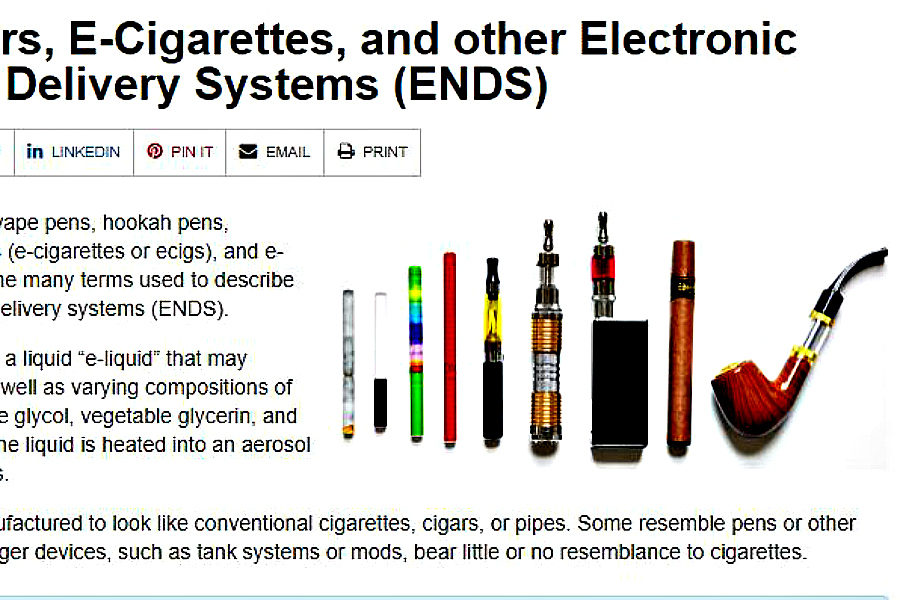Vaping: Gateway to Worse?
February 22, 2018
Vaping began as a ‘healthier’ alternative to smoking cigarettes and taking drugs. But as time goes on, more studies are showing that e-cigarettes are having the opposite effect: more and more people- youth in particular- are going from vaping to smoking worse substances, or even using vape equipment to imbibe drugs of a stronger caliber.
Edward Blevins holds a Master’s in Counseling and is dually licensed in New Jersey as a Professional Counselor and Clinical Alcohol/Drug Counselor. He works as a high school teacher, college professor, and actively runs a practice focusing on substance abuse counseling and psychological treatment for adolescents.
A short excerpt of an email interview with him discussing the effects of vaping among teenagers is below:
What is the most common effect that vaping has on teenagers (from what you’ve seen)?
“Vaping develops addictive patterns in both behavior and physiology.
Kids become accustomed to the activity of vaping (the actual use of the device) as a stress response, tension reliever, and social tool.
They also become physically addicted to the nicotine and become caught in a craving/release/withdrawal/craving type of cycle. The physical effects, such as potential lung problems, are still under study. It appears that they may be less harmful initially than cigarettes but carry their own consequences both short and long-term.”
Does it affect their behavior? The way they interact? Their overall performance in school? “Vaping in school is illegal (it’s a violation of the county health department codes). This sets kids up to be “sneaky” and prompts negative interactions with security and administration.”
And finally, in your opinion, do you think that vaping is a gateway to using other addictive substances (e.g. drinking or illegal drugs)? “Based on the fact that it introduces them to the addictive pattern described above, I would say yes. I’d also say yes based on the current popularity of vapes as a device for smoking pot, thc oil, dabs, and other forms of cannabis products.”
This licensed professional believes that vaping is a segue to worse substance abuse. The New York Times maintains a similar prediction. The biggest problem with this commonly accepted addiction is that most people believe the practice is harmless. However, nothing could be farther from the truth. If one takes into consideration all the negative effects clearly stated above, and compare it to the temporary high, or ‘social tool’ vaping seems to be, the cons greatly outweigh the pros.
“While the industry argues that vaping is not a stepping stone to conventional cigarettes or addiction, some anti-smoking advocates contend that young people become hooked on nicotine, and are enticed to use cancer-causing tobacco-based cigarettes over time.” (NY Times) Vaping may be better or more healthful in some ways in oppose to smoking cigarettes, but it insinuates dependent behaviors similar to addicts.
According to the Chicago Tribune, high school students are sneaking e-cigarettes into schools. E-cigarettes can look like high lighters, lipsticks or flash drives. Vaping may provide short-term enjoyment or release, but one will eventually pay the price farther down the road. “Research has shown that nicotine exposure can harm their still-developing brains.” (Chicago Tribune)
Not only are the behaviors instigated by vaping dangerous, or the various side effects, but so is the actual liquid. “E-juice” – a mix of water, artificial flavoring, propylene glycol, vegetable glycerin, and (most times) nicotine- can be poisonous and has been proven fatal for young children.
If spilled on the skin, it can be an extreme irritant, and if left on for a long period of time, the chemicals will most likely infiltrate one’s bloodstream. In December of 2014, a one-year-old child died from liquid nicotine poisoning. This was the first death due to e-juice over-dosage between infancy and toddlerhood in the United States. The flavors and vapors, chocolate and creme brulee for instance, are purposely appealing to children.
A reporter writing for www.healthychildren.org found: “most people who use e-cigarettes do not quit using cigarettes.” Vaping triggers the craving for stronger amounts of nicotine (if the smoker does not have it already).
The vaping industry is thriving -approximately 3 million teens vape- despite evidence that vaping leads to negative behaviors, unhealthy dependency, harmful effects on still-developing bodily systems, and the fact that vaping leads to worse addictive practices.
Links to additional information:
https://www.fda.gov/TobaccoProducts/Labeling/ProductsIngredientsComponents/ucm456610.htm






